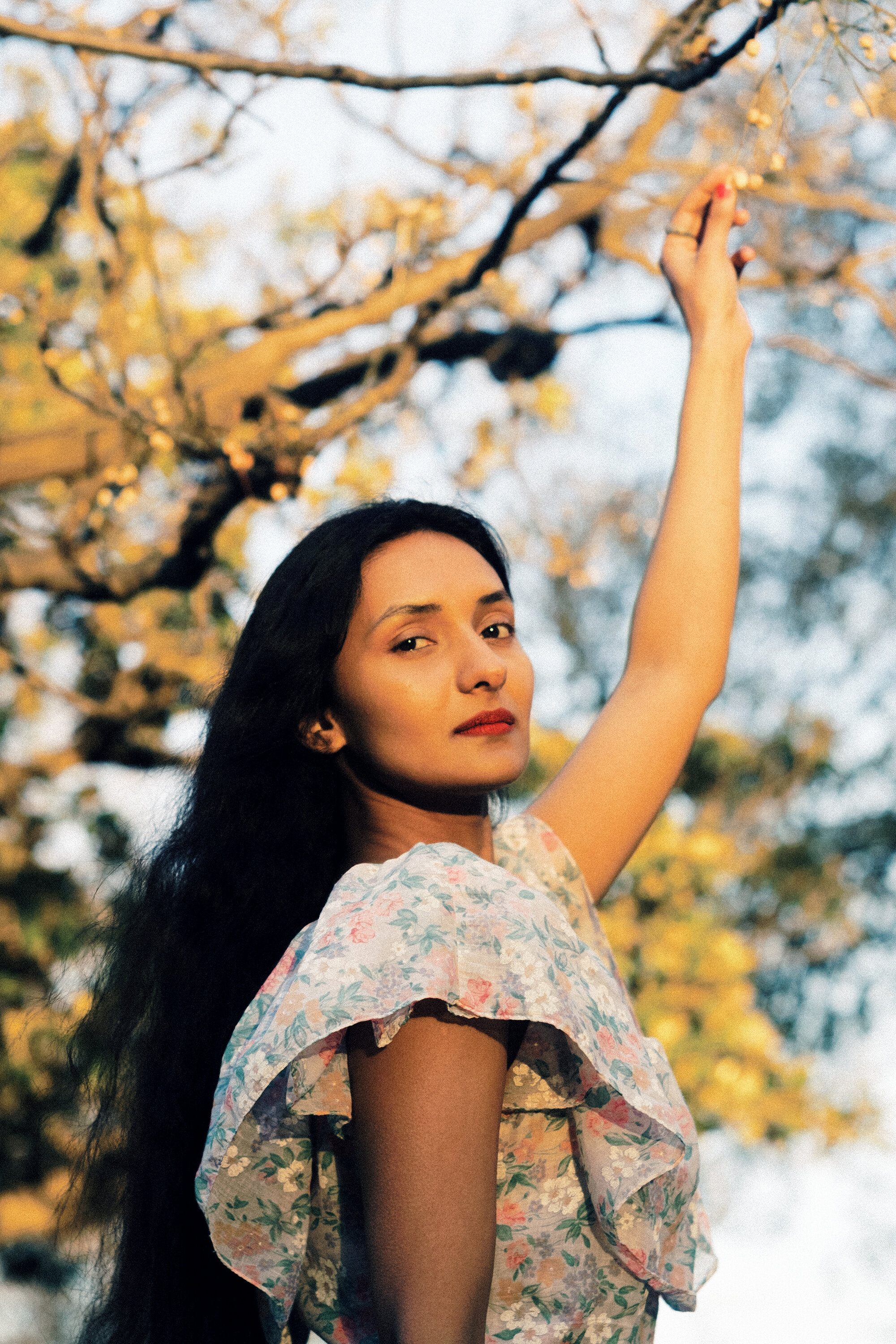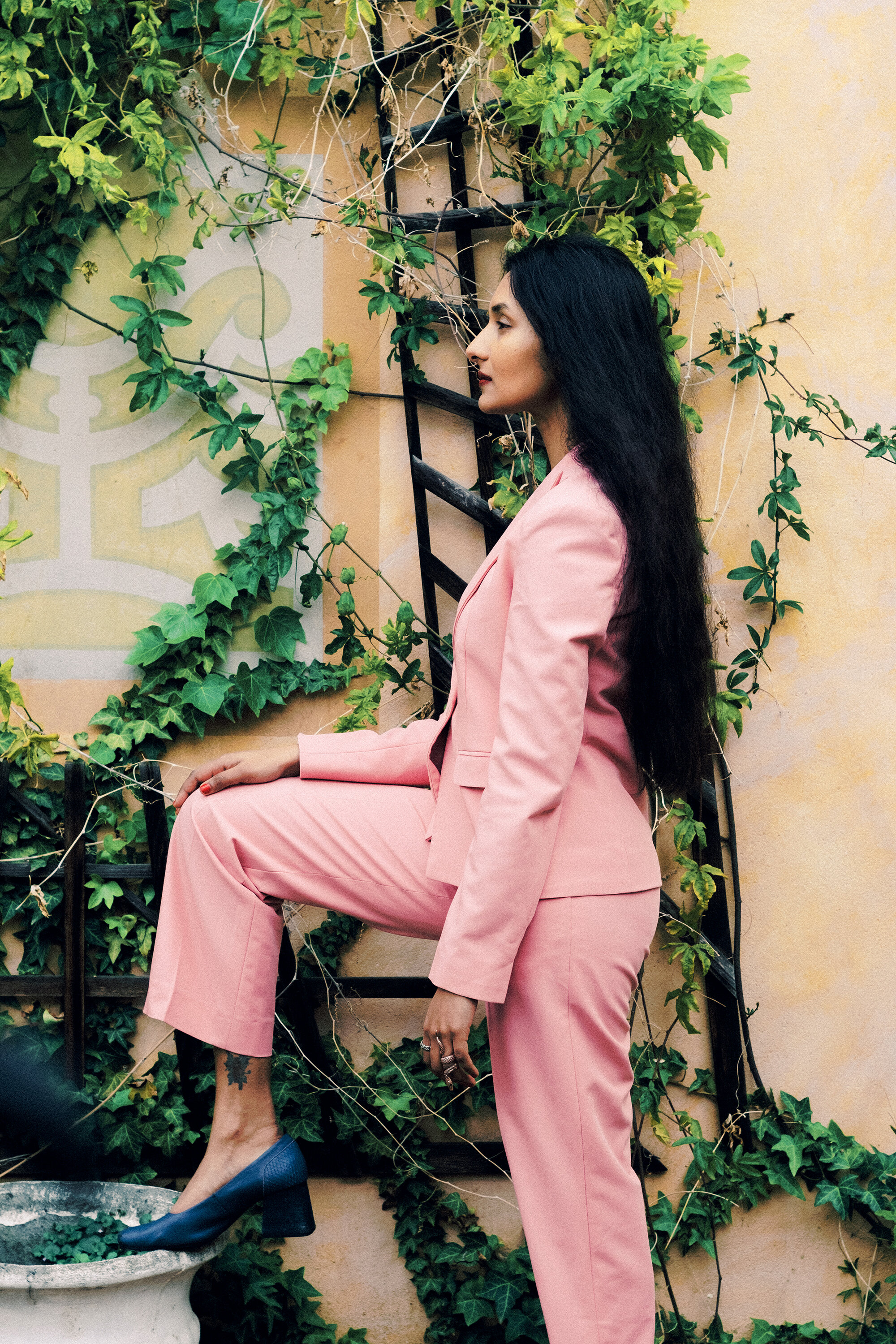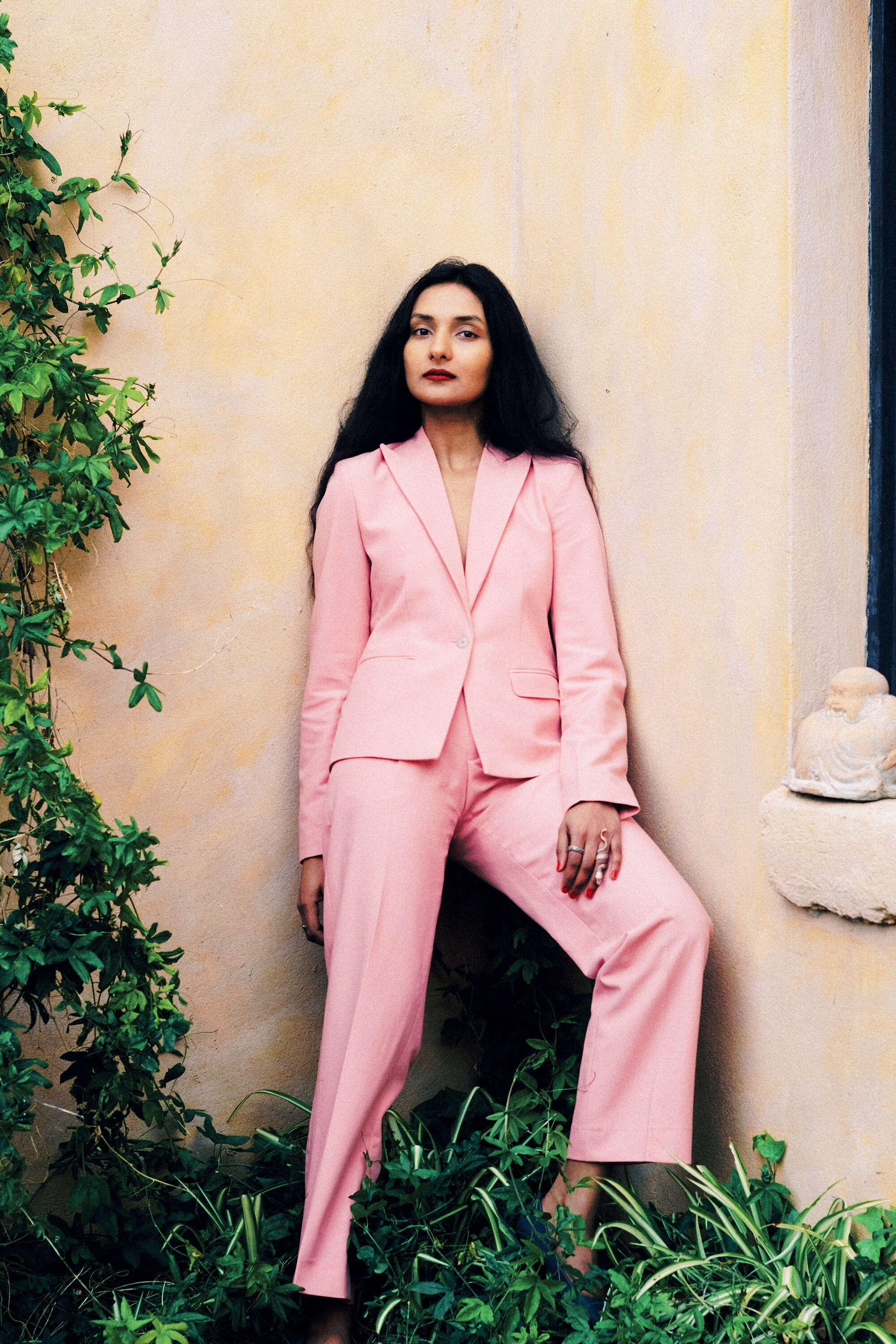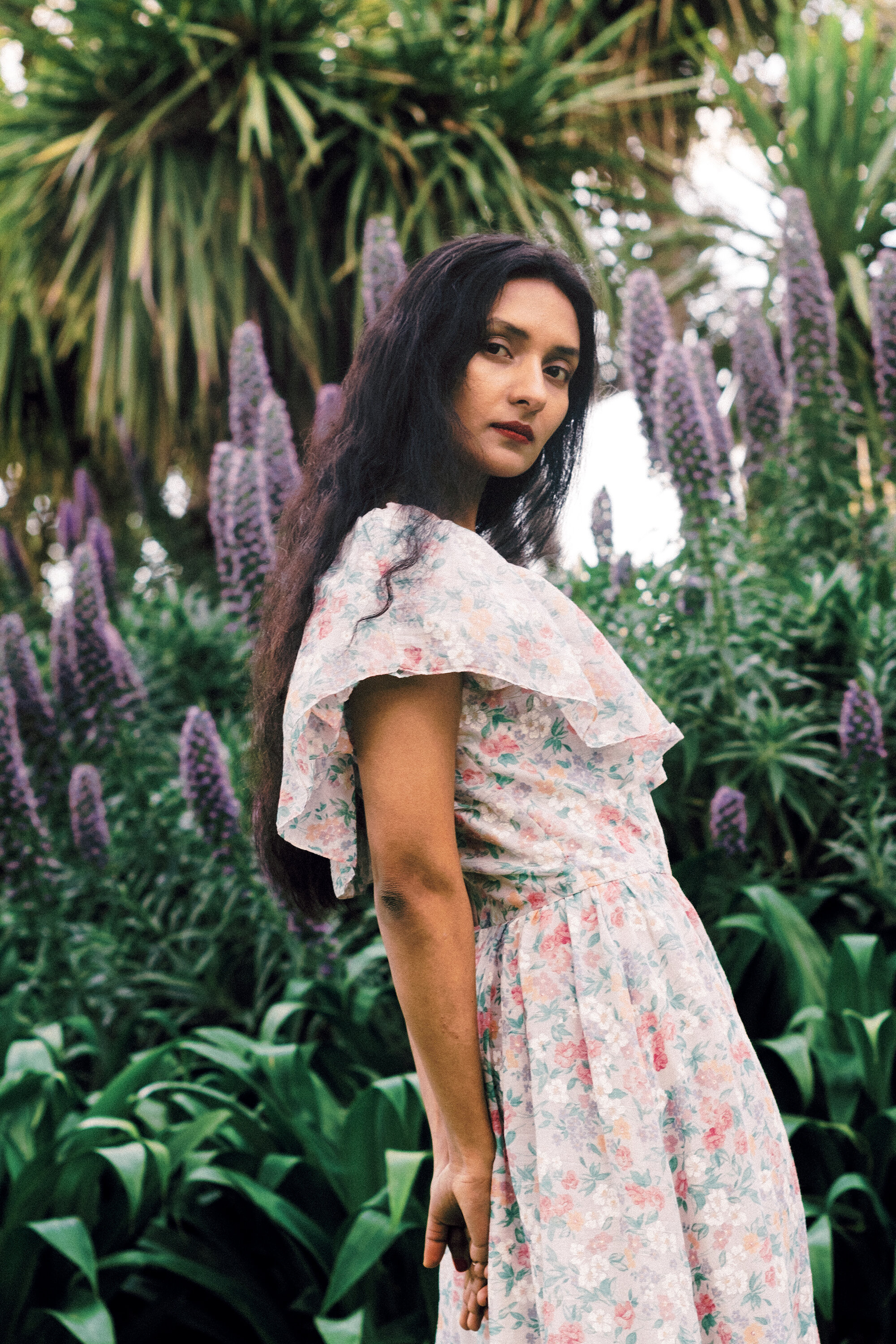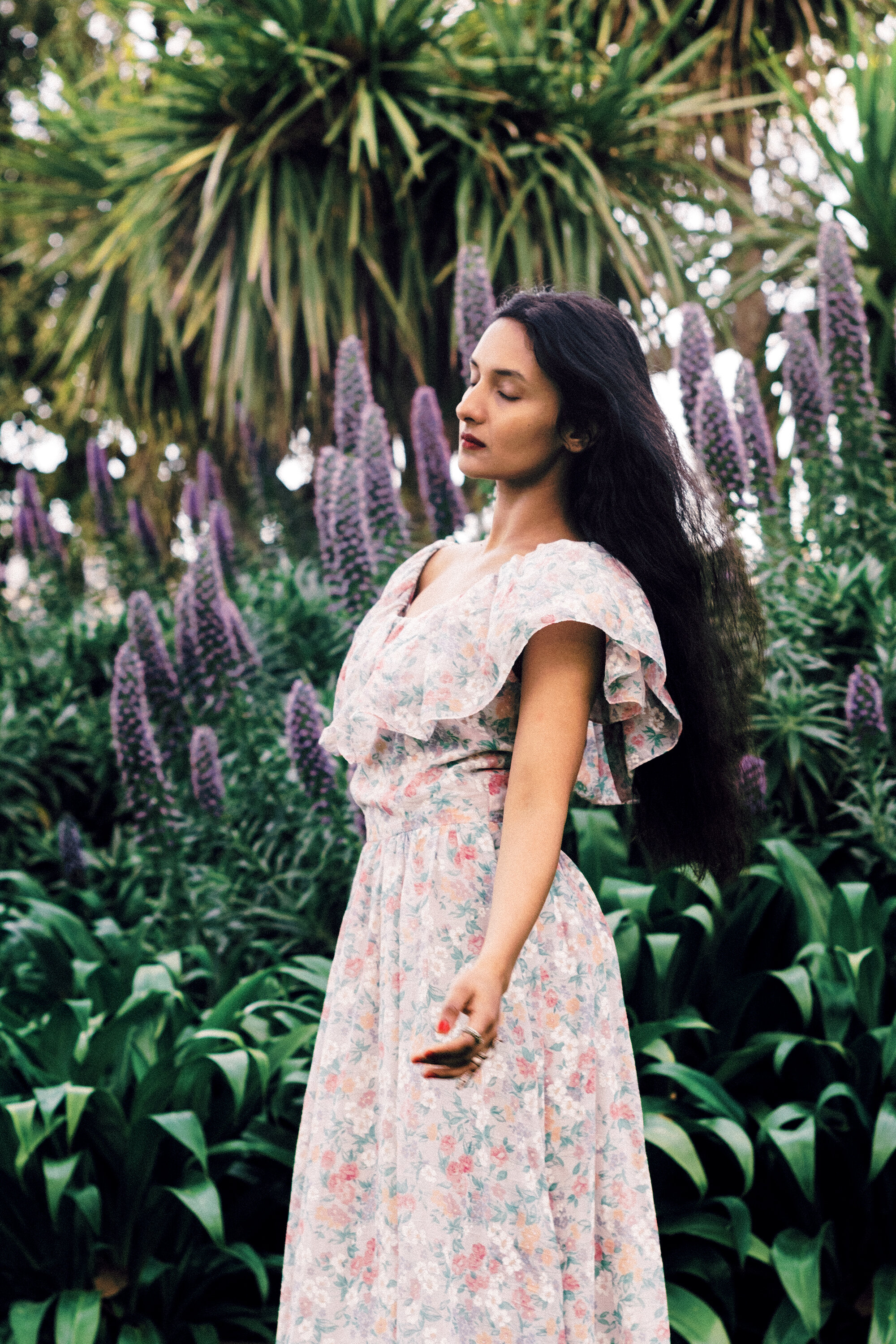Interview #117 — Manisha Anjali
by Adalya Nash Hussein
Manisha Anjali works with text and performance. Her practice and research explores narratives and languages of dreams and exile. She is the author of Sugar Kane Woman, a collection of poems about the dreams and hallucinations of exiled Indo-Fijian women.
Manisha has been a Hot Desk Fellow at The Wheeler Centre, an Emerging Cultural Leader at Footscray Community Arts Centre and a Writer in Residence at Incendium Radical Library. She is currently the Poetry Editor at The Lifted Brow.
Manisha is performing in ‘On Power’ for Emerge in the Yarra, October 18-19. Find out more here.
What did you read growing up?
As a child my favourite book was The Folk of the Faraway Tree by Enid Blyton, followed by Grimm’s Fairy Tales. My father bought an illustrated encyclopaedia set called Childcraft on layby which contained all the secrets of the universe. For a long time I believed my family was rich, because I was always surrounded by books. I lived in my imagination. I was so lucky.
How did you first start writing?
My romance with poetry began with an act of violence. I was a Hot Desk fellow at The Wheeler Centre working on a fiction manuscript when I began resenting sentences, narrative coherence and structure. I violently crossed out all the ‘ugly’ words I had put around textural moments so the manuscript would make sense. I was left with what I really wanted to say—moods, colours and sounds in the absence of convention, somewhere between a story and a song—poetry.
How did you move to performing your writing?
I began attending poetry readings shortly after the publication of my first collection. I noticed that off the page, those words had heartbeats of their own. In performance, my poems became living documents, metamorphosing every time depending on my temperament, my hair, the weather. I fell in love with the transience of performance, that visceral in-the-flesh experience.
My romance with poetry began with an act of violence.
What is the overlap between your poetry persona and your self? Do you find people who've seen you perform ever have strange expectations of you?
Because my practice is rooted in the language of dreams and illusions, people sometimes think that I am a conduit between this world and the next, but the truth is we all are. People have likened my work to childhood memories, incantations and prayers, and more recently, demonic possession. After a performance at La Mama Theatre, a poet questioned me on whether I was acting or if I was possessed. Recently I made a sound installation at c3 contemporary which consisted of me speaking in tongues for an hour. Upon listening to the recording, a fellow artist said to me, “Have you seen a film called Possession? There is a scene where the main character goes crazy screaming in a train station, spilling milk all over herself.”
I've seen you perform quite a few times and always really struck by the experience. Where did the instinct to perform come from?
I embody a torturous dichotomy of being a shy person and a performer. Perhaps the instinct to perform comes from an innate desire to have intimacy with the whole world. Its like thriving on being vulnerable and naked in public spaces.
There are secret instructions that I give myself before every performance. It may be something like, “be a colour be a balloon” or “run run run run rum rum rum rum”. These things don’t make sense to anyone except me and my performance world, but perhaps it aids in creating that atmosphere of strangeness people seem to experience with me. Many people ask what I do with my voice: I speak from my diaphragm to evoke a natural contralto, which sometimes feels like multiple ghosts coming out of me. I make shapes with my tongue. I give my sound-making organs a name. I look at every audience member in the eye.
Are there other forms of performance that inspire you?
I am in love with what artists like Yoko Ono, Cecilia Vicuña, Laurie Anderson and Karen O from the Yeah Yeah Yeahs are doing, especially as I delve deeper into sound recording and vocal improvisation. I love all music. Music is a life force.
I often compose with a metronome which explains the musicality in every piece. I want my words to move like a snake. When you let words dance between perfect intervals, you create something akin to spiritual recitations. In this way I slip under a delicate hypnosis, where words, sounds, repetitions arrange themselves, as if guided by a dark force outside myself.
Poetry, more than other forms, feels like there is a really a significant community of writers of colour, what do you think it is about poetic forms that make them powerful for writers of colour?
Poetry is a raw form of expression that shines on those living in the margins of society. Like music, poetry is carved from the gradients of resistance and alienation and love and abandon. We are living in the Age of the Immigrant, the Refugee and the Nationless Wanderer for whom poetry seems like the only home. Poetry speaks to forgotten oral storytelling practice and it is pure because it has no form – it goes beyond limitations of language and narrative which can be harmful for the imagination. For those of us who are outsiders, poetry is the closest thing to freedom.
There are secret instructions that I give myself before every performance.
We are living in the Age of the Immigrant, the Refugee and the
Nationless Wanderer for whom poetry seems like the only home.
One element I really admire in that specificity is the way you integrate stories and language that will not be familiar to a White audience. Do you think about the White gaze on your work?
I think more about creating work that I would like to experience, work that I haven’t seen yet, often expressed through the languages I grew up with. I am representative of my community because Indo-Fijian vernacular and stories are rarely explored in contemporary art and literature. In some ways I am not representative of my community—because I play with language and form so much—half the time nobody understands what I’m doing.
I’m not preoccupied with the white gaze because that would be damaging to both my mental health and my creative practice. I create in isolation, in the absence of power, in a space where I feel free. Ultimately, the audience will decide what my work means, regardless of who they are and how much power they hold. Whenever I release a new piece, I relinquish all meaning-making to the reader, a form of self-annihilation which for me, completes the creative cycle. It’s like that Roland Barthes’ theory: the death of the author results in the birth of the reader—and the birth of literature.
Do you think there's something connecting intergenerational trauma and myth-making?
I think myth-making can help in the healing of the cultural and spiritual violence that creates intergenerational trauma, by illuminating what we have forgotten or lost access to. Mythology stems from the source of storytelling—dreams—our collective psychological inheritance. It serves as a reminder of our creative ancient beginnings, our symbolic engagement with the world and our intergenerational connectivity. The practice of myth-making can bring to light beautiful and important frameworks for living and dying. In saying that, myths need to be regularly updated to suit the times. I am interested in learning from the past, but not necessarily upholding all traditions.
In other interviews I’ve notice this really strong urge to define/pin down whether you do and don't believe in the practices and spirituality that are referenced in you work. Is that something you think about?
It is disturbing that some people read my work as some sort of statement about my beliefs, as opposed to being positioned as an artist who plays with aesthetics—a privilege I am not afforded. Perhaps the biggest misconception is my religious standing. Religious iconography is an important aspect of my practice and I am in love with the colours, flowers, objects, mythology and rituals that are part of Hinduism, something I was born into. It surprises people that I don’t actually subscribe to any particular religion but I am utterly obsessed with religion. I read religious texts for fun and for research.
There is certainly a strong urge to categorise and define my existence in society, I’ve experienced it all my life. Ultimately labels on my identity, religious beliefs and background are arbitrary, futile. This is the only truth about me: I am afraid of dying.
What kind of research goes into writing your poems?
I am interested in hidden selves and hidden worlds. I am conducting an ongoing study of dreams and hallucinations. I collect symbols and narratives from my dreams in a daily journal, which will later inform the basis of my compositions. I am running an audio archiving project called Neptune, where I record the dreams, hallucinations and visions of artists, writers and thinkers.
One of the most joyous research projects I completed recently was during my summer residency at Incendium Radical Library. I read translations of devotional love poems by women mystics and saints from ancient India—Lal Ded, Akka Mahādēvi, Andal and Mirabai. Many of these women renounced their lives as wives and mothers and took up asceticism and wandering, sometimes naked, intoxicated by love for their chosen deity. The interesting thing about these poems were that the lines between religious devotion and eroticism were blurred. It was amazing studying poetry composed by ancient women, from a place where women are perceived as having such little agency or influence. I have a small text forthcoming from this project, called Electric Lotus.
Prior to that I was researching coolie folk culture and resistance. I found plantation poetry and protest songs written by workers across Fiji, Guyana, Trinidad and Tobago and South Africa. Because the workers referred to indenture as naraka which translates to hell, I was also interested in depictions of hell and the afterlife in Hinduism, which I found in ancient texts like Garuda Purana and Agni Purana. From this I composed a choreopoem called Song of the Crocodile which explored the folk psyche and resistance practices of three women who were brought to Fiji from India for the purpose of indentured labour by the Australian-owned Colonial Sugar Refining Company, between 1879 and 1919. Their names are Naraini, Kunti and Sukhrania. The choreopoem is a beautiful form which combines poetry, drama, dance and song; first coined by Ntozake Shange in 1975 in reference to her work for colored girls who have considered suicide when the rainbow is enuf—a text which changed my life.
Do you have day-jobs? Did you go to uni? Is there other work, thinking, or volunteering that you do that is important?
I studied literature and film at the University of Auckland, and more recently completed my honours in creative arts at Victoria University. I work for a local clothing label. I am the producer of Neptune: a dream archive. I run workshops where I teach people how to use symbols and narratives from their dreams and unconscious lives to create texts. I am also the Poetry Editor at The Lifted Brow.
Do you have any advice for emerging poets?
Start a dream journal. You will never run out of ideas, you will never experience writer’s block. Trust me.
Who are you inspired by?
My parents, who have sacrificed everything. My mother is from Taveuni, the most beautiful island and the only place on earth where you can find the wild tagamoucia flower. My papa is from Labasa, a city in Vanua Levu, where lives the Naag Baba—a holy stone in the shape of a cobra which grows and grows.
What are you listening to?
Lately I've been getting into sixties psychedelic music from Japan. There is a great compilation series called Big Lizard Stomp! Teen Trash From Psychedelic Tokyo '66-'69 with bands like The Mops, The Carnabeats and The Golden Cups.
What are you reading?
I’m floating between Moon Over Melbourne by Ouyang Yu and the The Passion According to G.H by Clarice Lispector.
How do you practice self-care?
As Candy Bowers famously said, “decolonise and moisturise”.
What does being Asian-Australian mean to you?
It is a label that allows me to be part of such a big community, which is great, but it also diminishes other aspects about my life that are important—I have lived in Fiji and New Zealand for the same amount of time as Australia. I am also a Pacific Islander and a Kiwi!
Start a dream journal. You will never run out of ideas, you will never experience writer’s block. Trust me.
Find out more
Interview by Adalya Nash Hussein
Photographs by Sarah Ruhullah




